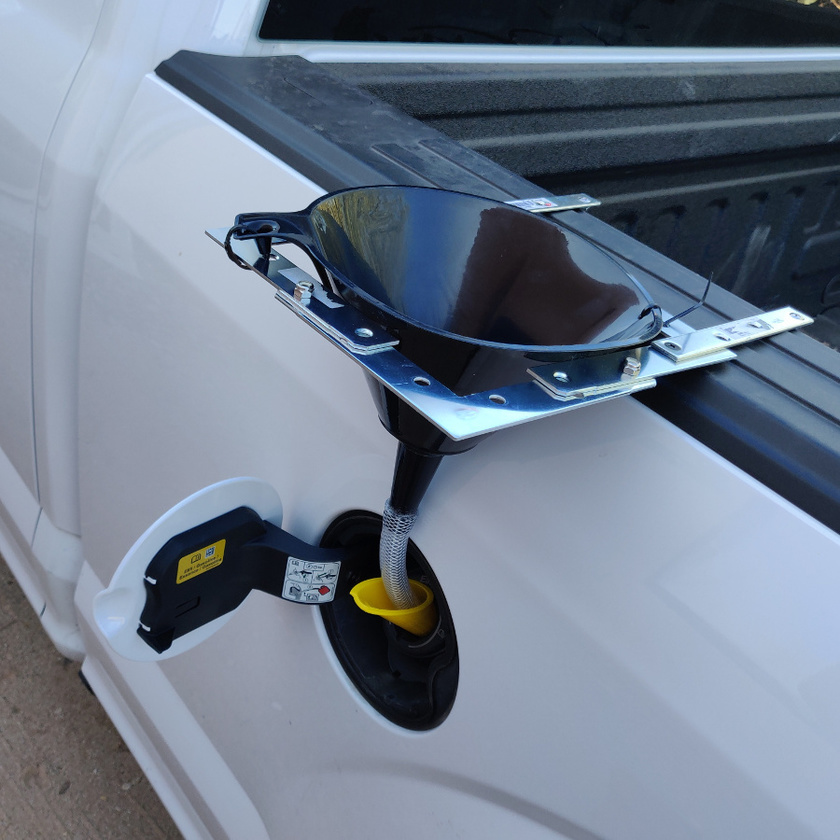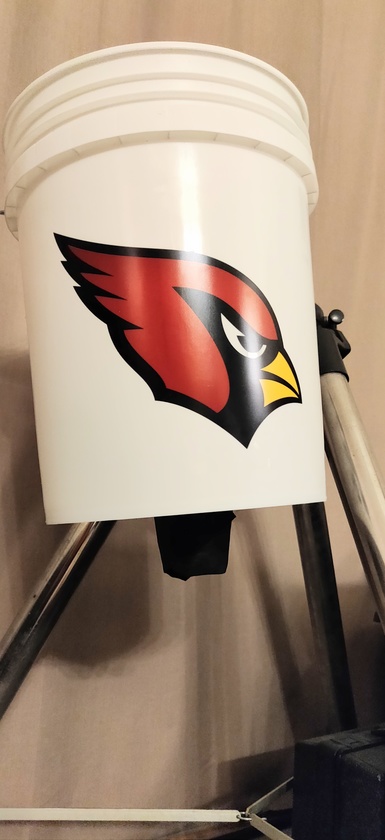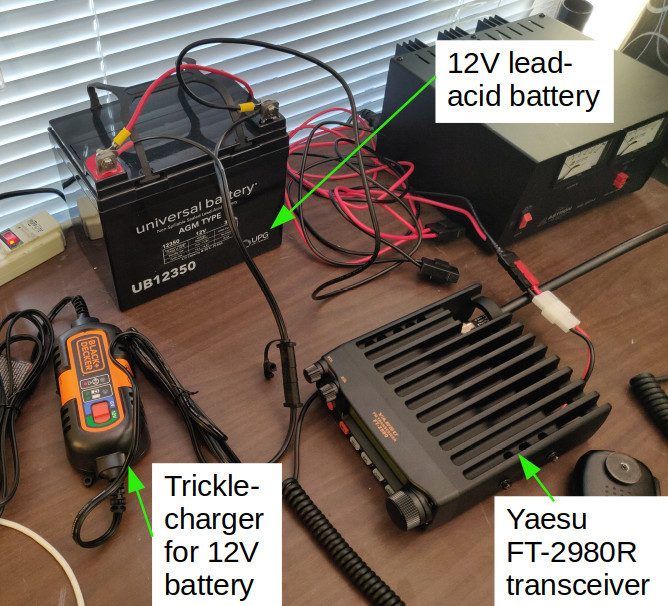I've been writing this for awhile and finally have it ready...
Having a spare supply of gas for your vehicles can make a big difference in an emergency situation. The main issue with storing it is that gasoline is volatile, and over time it will tend to degrade to the point where it wouldn't be useable anymore. There is a lot of information online about this, but here's what I do:
-
I use 4 regular metal 5-gallon tanks, labeled 1-4, and I store gasoline in them with no additives. There are stabilizer mixes that you can put in gas that is supposed to make it last longer than 6 months, but this isn't necessary with what I'm doing.
-
I set up a schedule for using the gas in these tanks, staggered somewhat from each other so I don't have to do all 4 at once. This could be every 6 months, but I've made it every 3 for now to help me get used to the system. That means that gas doesn't sit unused in any one tank for more than 3 months straight.
-
When it's time to cycle the gas in a tank, I wait until my truck is down around half-empty and then I fill the truck with the gas stored in the correctly numbered tank. This is easier said than done, and practicing this in advance is more important than you would think.
-
After emptying the tank into my truck, I fill up that tank and my truck the rest of the way at a gas station and return the tank to the collection, where it waits another 3 months.
-
I store all this gas in an outdoor shed, not next to my house! Gasoline vapor is highly explosive and there have been many cases of people destroying their garage or burning down their whole house because of storing gas inside. It is extremely important that you store your gas in a well-ventilated area away from any open flames or sparks. Even though it’s in the metal canister, you still need to take these precautions.
-
You need to work through what funnels you need to make this happen, in advance of a time when you would actually need this emergency gas reserve. If you don't have the right tools you will end up spilling a bunch of gas and just having a difficult time in general.
-
Some people say it's fine to store gas in plastic containers, but I prefer metal. They're just more robust and less likely to leak. I have the 'safety can' style, which are fine, and also the 'jerry can' style, which are nicer but a little more expensive. I've also used the real Wavian brand jerry cans, and those are nice but not worth the price increase, in my opinion. Here are links to each:
https://www.tractorsupply.com/tsc/product/eagle-safety-gas-can-5-gal?cm_vc=-10005
https://www.tractorsupply.com/tsc/product/midwest-can-5-gallon-metal-gas-can?cm_vc=-10005
https://wavianusa.com/products/steel-fuel-jerry-can
If you do buy the Wavian cans you also need to buy a replacement spout, because the 'safety flow' one they come with is completely useless: https://wavianusa.com/products/long-nose-flexible-pouring-spout
It’s also important to note that gasoline can cause unpainted metallic cans to leak over time. So check to see that the inside of your cans are painted!
Important notes for capless fuel vehicles:
-
If, like me, you have a capless fuel tank on your vehicle, you will have some work to do if you don't want this to be a slow and annoying process every time you go to cycle a tank. You need to buy one of the special funnels for filling your tank if you don't have one already. That funnel has to be in the tank, and then you pour from your gas can into it. The problem is that it's slow and prone to spilling, and you have to hold your 5 gallon tank the whole time. Try it and you'll see what I mean. This is the funnel I bought: https://www.amazon.com/gp/product/B00S66BUAE/
-
To improve on that, I came up with a couple different methods. First, you can use some PVC hose of the correct diameter and some Seal-All from Autozone to attach a hose to the funnel. Then if the nozzle of your gas can will fit into the hose you can make a sort of fast-fill attachment for your gas tank this way. That will prevent the spilling and reduce the amount of time you have to stand there holding the tank up. To avoid having to hold the tank you could also set something up for it to rest on while you're doing the filling.
-
The second method was more work. I started with the hose on the small capless-fuel funnel, and then attached another funnel to the other end of the hose. That larger funnel is then mounted with some angle parts such that I can hang it off the side of my truck. This lets me fill that larger funnel using a gas can that's sitting on the rail of the truck. The advantage here is that I can carry this adapter with me and use it to refuel from the jerry cans if I'm carrying them with me.
-
I'm also experimenting with a transfer pump to transfer fuel from the cans into the tank without having to do any of this. In retrospect, this may have been the smartest solution, but there are some issues when dealing with the capless fuel tank. Working through that now.
I know some of our active members have more extensive or sophisticated methods for this, but this has been working well for me and wasn't that hard or expensive to set up. Tanks are around $200 total if you're storing 20 gallons, and the extra time to cycle a tank every couple of months isn't bad at all. Definitely worth it, in my opinion, to be able to fully fuel up my car in any situation.
Feel free to share your methods!
UPDATE: After originally writing this, I realized that a fuel siphon makes filling the vehicle from the tanks a lot simpler. They used to sell these at HomeDepot but I can only find them on Amazon now: https://www.amazon.com/Siphon-Pro-XL-Largest-Diesel/dp/B01M5D2XZQ
To use the siphon you just need to have your can higher up than your gas input on your vehicle, and then you may need to attach the end of the siphon hose to a funnel if you are dealing with a capless fuel system. Then you stick the other end down to the bottom of your can, start the flow with the hand pump, and then just wait until it’s done.
[I'm reposting this to the top because we have a number of people who still need to get their ham license!]
For anyone near Tucson who hasn't already gotten your Ham license or is interested in upgrading what you already have, here is some info based on my experience of getting my Technician and General licenses recently:
- Free testing is available monthly in Tucson. Next event is March 8th @ 7PM . https://k7rst.org/testing.html
-- There is no preregistering. You just show up, but I highly recommend being there a half hour early to get in line. I was there 15 minutes early and waited a little more than an hour before it was my turn to take the test, and then there's more waiting in between exams if you take more than one.
- There is also an online testing option available now. It generally costs ~$15 and you need fairly decent internet, a computer with a webcam, and a phone with a camera. (Thanks to @freebirdie for sending me the info on this).
-- Look here to find a session that's open: ...
I've been meaning to document this for quite awhile but things kept getting in the way. I've been writing this slowly over the past several weeks now, and am finally ready to post it!
I've created a simple automated planter for low-effort food gardening that seems to work pretty well for a a decent number of different plants. This was originally inspired by Larry Hall's "Rain Gutter Grow System", and then I fused it with the general concept of bottom-watered reservoir planters, which you can find everywhere.
Larry Hall's video should show up at the end of this post:
One implementation of a standard, non-automatic, bottom-watered reservoir planter:
https://www.amazon.com/GroBucket-Watering-sub-irrigated-Container-portable/dp/B079CT29RZ/
My goals were to keep costs relatively low, minimize water usage, and minimize the weekly time I need to put in to maintain the garden. I don't mind spending a bit more time to get something set up if that means I don't have to remember to do another ...
I've recently upgraded my VHF transceiver capability, and it has made a huge difference. We ask everyone to have a radio of some sort, and the cheapest Ham radio that works is the Baofeng UV-5R. I don't want to ask people to spend a ton of money, but from my own experience I do think upgrading is worth the extra expense. The receive electronics on the UV-5R are low-quality so they don't seem to work well with external antennas. A lot (or all) of the advantage you'd get from putting an external antenna up on your roof is lost when you plug it into the UV-5R.
The tranceiver I bought is the Yaesu FT-2980R:
https://www.hamradio.com/detail.cfm?pid=H0-015771
Unfortunately they just raised the price by $20, but it's still only $150 (or closer to $170 with shipping and tax). Note that it's a VHF only radio and is very simple compared to the more expensive models, but it is a beast of a machine that can dump 80W of power if needed.
This radio works well with every external antenna I've tried, and it's well suited to ...




























